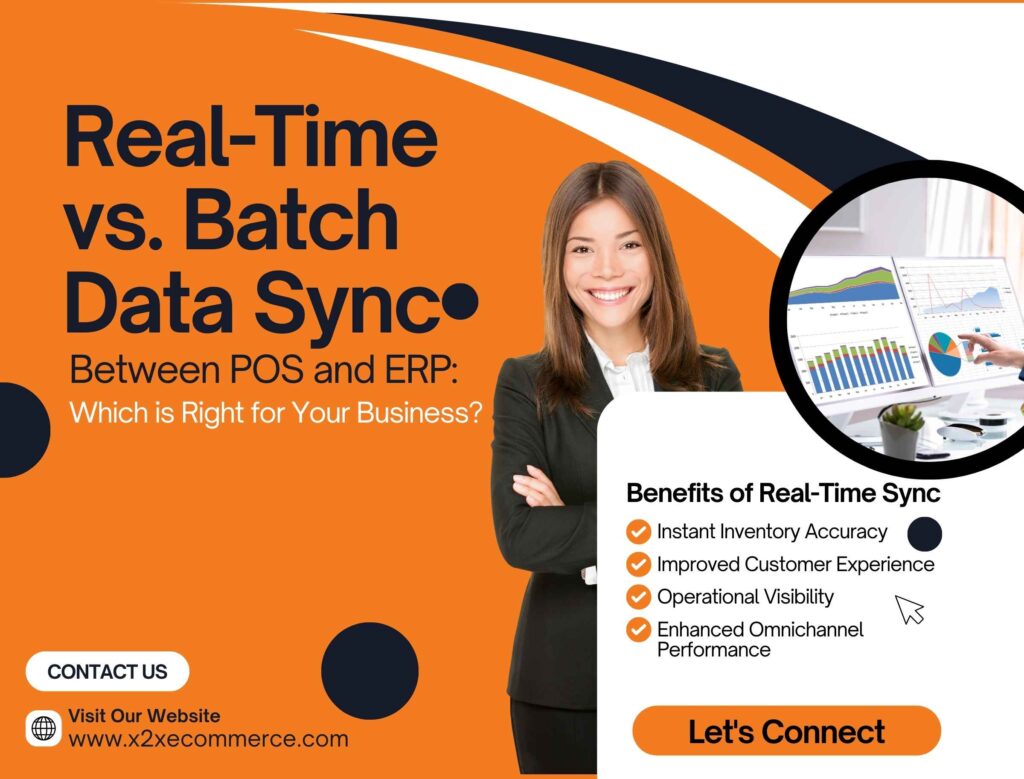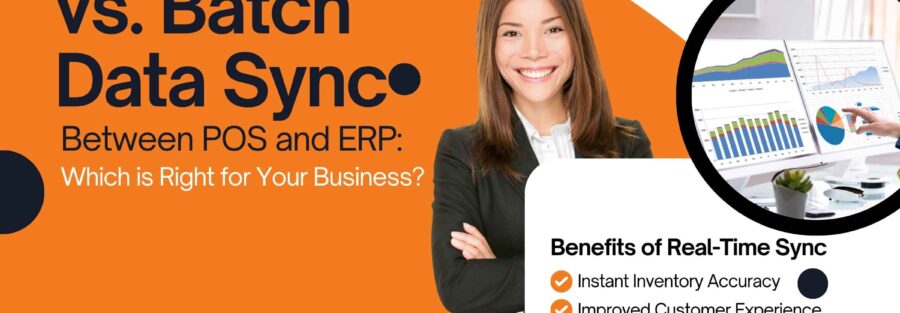
In the current fast-paced retail landscape, it is imperative to have a smooth data flow between your Enterprise Resource Planning (ERP) system and Point of Sale (POS) environment. But when synchronizing data between the two, businesses are usually left facing the dilemma of whether to use real-time or batch synchronization. Knowing the difference between the two methods — and what it means is the impetus to choosing the correct option for your business.
What Is Synchronization of Data?
Data synchronization is having data in sync and in real-time on our systems, between your ERP and POS. That’s synchronizing sales, inventory counts, customer information, prices, promotions, and much, much more.
Real-Time Sync: Always Current
Real-time sync allows data to transfer in real-time between the ERP and POS. Inventory levels are updated in real-time when a sale is made, and price changes are synchronized to all systems.
Benefits of Real-Time Sync
- Instant Inventory Accuracy: Avoids overselling and stockouts.
- Improved Customer Experience: Loyalty points, promotions, and customer information are current.
- Operational Visibility: Managers get real-time information to make effective decisions.
- Enhanced Omnichannel Performance: Real-time inventory update across stores and online platforms.
Drawbacks of Real-Time Sync
- Infrastructure Dependency: Stable internet and continuous connectivity are needed.
- Complexity: Real-time processes require sophisticated integration and monitoring.
- Cost: More setup and maintenance costs compared to batch processes.
Batch Sync: Reliable and Scheduled
Batch syncing is gathering data for a period (e.g., end-of-day or hourly) and syncing it in bulk between systems later.
Advantages of Batch Sync
- Simplified Architecture: Less complex to install and maintain.
- Cost-Effective: Reduced maintenance and infrastructure costs.
- Less System Load: Scheduled updates don’t create ongoing data traffic.
Disadvantages of Batch Sync
- Data Delays: Sales and inventory data may be delayed.
- Limited Real-Time Insights: Decisions are made on stale data.
- Risk of Data Discrepancies: Especially in high-transaction environments.
Which One Should You Use?
The choice between real-time and batch sync is based on some factors:
| Factor | Real-Time Sync | Batch Sync |
| Business Size | Medium to large businesses | Small to medium enterprises |
| Transaction Volume | High | Moderate to low |
| Customer Expectations | High (omnichannel, loyalty) | Moderate |
| IT Resources | In-house or outsourced IT | Limited IT capabilities |
| Budget | Higher investment | Lower cost |
Hybrid Approach: The Best of Both Worlds?
Most contemporary retailers choose a hybrid solution, real-time sync for mission-critical data (stock, customer info) and batch sync for non-time-critical processes (reports, promotions). This is a compromise of performance, reliability, and cost.
Final Thoughts
Deciding whether to sync batch or real-time data is not something that should be done in a vacuum. It should be done with your customer experience objectives, business model, and growth strategy in mind. Whether you are one store or an empire of global retailers, successful syncing of POS and ERP systems will make you agile and competitive in a changing marketplace.
Interested in integrating your POS with your ERP system? Let’s Connect with x2x-eCommerce




